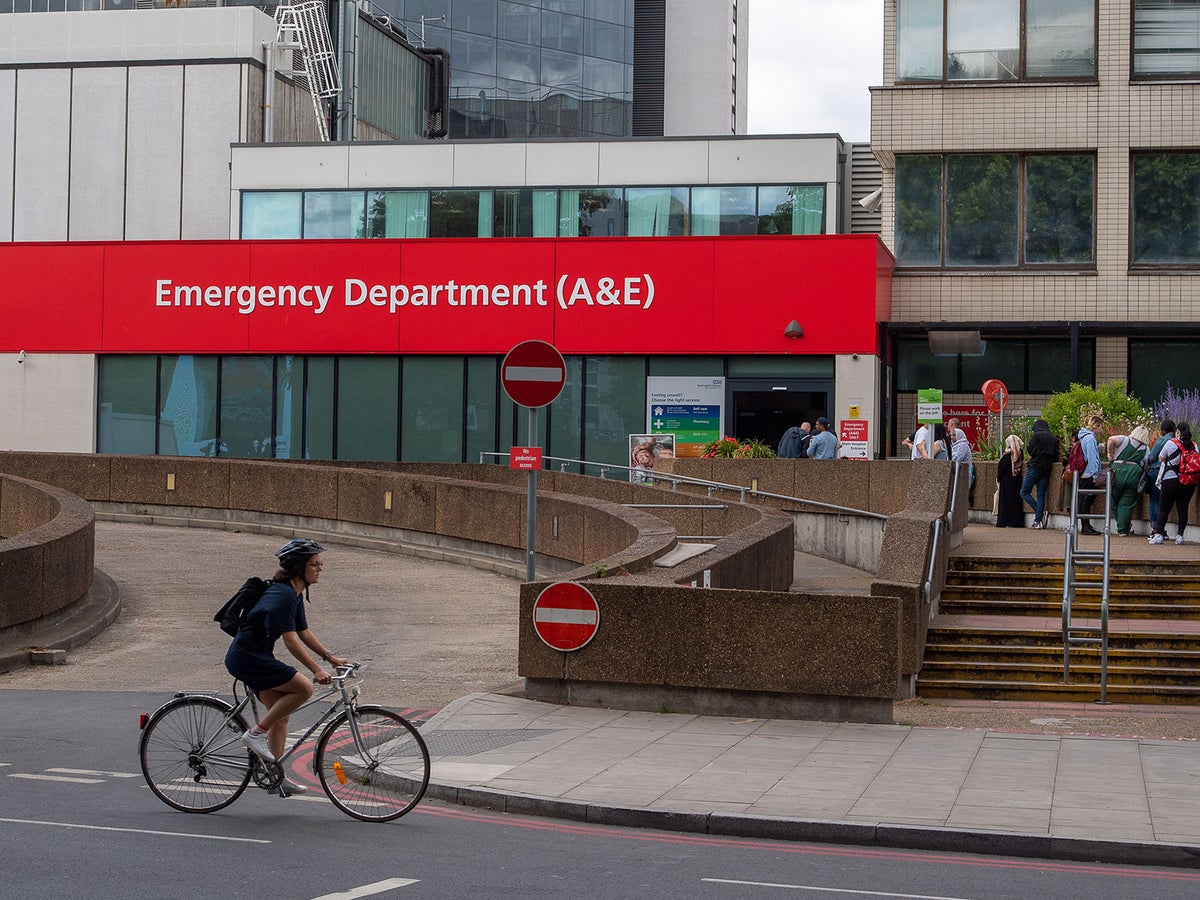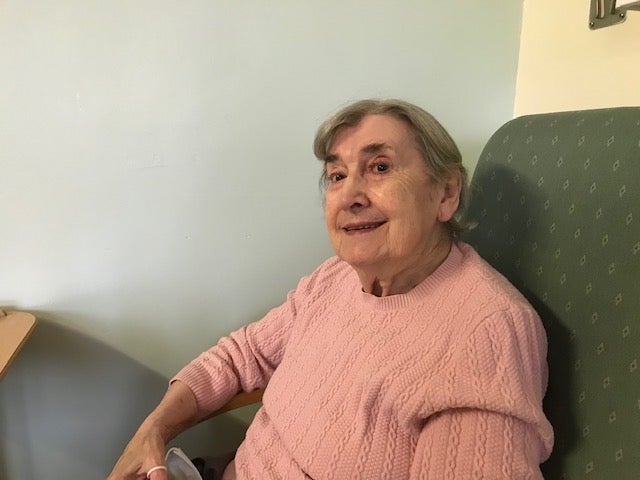
A&E waits are now “apocalyptic” and “worse than ever imagined” leaked NHS data shows, and could be driving 1,000 patient deaths a month, The Independent can reveal.
Almost 700,000 people have waited more than 12 hours in A&E in the first seven months of 2022, according to leaked NHS data.
The “hidden” monthly trolley waits, not published in national data, have more than doubled this year in comparison to 2019.
Dr Katherine Henderson, president of the Royal College of Emergency Medicine, warned that data shows trolley waits are “worse than ever imagined” and said it is “scandalous” the real figures are not published despite promises.
Dr Henderson warned the deterioration in A&E waiting times is the result of “decades of underfunding” and “unheeded warnings” over staffing and social care.
In one message to staff in Nottinghamshire, seen by The Independent, hospital leaders said last week patients were waiting more than 40 hours for beds in A&E, while in some areas of the hospital there was only one health worker for every 14 patients, with some patients waiting at home with no care.
The NHS has been collecting data on 12-hour waits, measured from the moment a patient arrives in A&E. This data, as previously uncovered by The Independent, is far higher than the official figures published by the NHS each month, which only measure the time waited after a decision to admit a patient is made.
Data obtained by The Independent shows a 144 per cent increase in the monthly 12-hour waits from arrival in 2022 compared to 2019 from almost around 37,000 a month to almost 100,000 and up from 51,000 in 2021.
Despite the increase in long waits the average number of people attending A&Es each month is broadly similar to 2019 at 1.7 million, suggesting the waits are not driven by an increase in attendances to major A&Es.
Statistician Dr Steve Black, who published a report on mortality rates in A&E in the Emergency Medicine Journal earlier this year, said based on the number of waits uncovered by The Independent, around 1,000 additional patients a month may be dying in emergency departments because of long waits.
Feryal Clark, the shadow minister for primary care and patient safety, said: “No one should be in any doubt that after 12 years of Tory mismanagement, our NHS is in crisis and lives are being put at risk. Liz Truss and Rishi Sunak are desperate to distance themselves from this damning record, but the fact is that their fingerprints are all over it.”
‘Hell on Earth’

In December 2021, Christine Boone from Lincolnshire told The Independent her mother Beryl Sanders, who is blind, was forced to wait 10 hours for an ambulance in “agony”, three hours outside A&E, and, once inside, a further 20 hours in a “noisy” cubicle.
Ms Boone said: “She’s very sensitive to noise so it was like being in hell on Earth for her… the doctor called me in and said we can’t find a bed for her, but we have to admit her because she can’t move. She’s in so much pain. Then when I got there, mum was on her own. There wasn’t enough staff in A&E department and I had to feed her a sandwich and a cup of tea. I had to alert somebody to try and get a bedpan.”
During her wait alone in A&E items from Ms Boone’s bag were stolen, her daughter said.
Long waits usually experienced in winter are now occurring throughout the year, with one 31-year-old, Katie Stones, from Hereford, also describing a wait of 20 hours for a bed after being taken to hospital in April.
She said: “The staff are doing their absolute best for the patients but they're frustrated that their best isn't what they would want to provide ... how many more patients have to die, how many more staff have to leave?”
‘Decade of underfunding’
Dr Katherine Henderson, president of the Royal College of Emergency Medicine, said: “We have long known that the actual number of patients staying in emergency departments for over 12 hours have been hidden but these figures are worse than anyone could have imagined.
“These figures represent real people, real lives; lives being put at risk. While the pandemic will have had an impact, this is the consequence of years of unheeded warnings about the lack of beds, staff and social care available. A decade of underfunding is behind this, and the NHS is struggling to catch up.”
Although NHS England collects data through multiple routes on the time waited by patients after they arrive in A&E it has yet to publish any figures.
Dr Henderson said it was “scandalous” that the real figures are not published monthly, adding: “We need full transparency around this problem so that the government and NHS can work to fix it. It is deeply worrying that there appears to be a lack of concern about this.”
Dr Black said: “Based on work we published earlier this year on the relationship between excess mortality and the length of time patients wait it is likely that more than 1,000 extra deaths are occurring every month in English A&E departments compared to the number who would have died were waits shorter.”
He explained that compared to 2016, when the NHS was under less pressure, there was a “notable increase” in mortality for people waiting longer than five hours. Estimates made in the original study suggested one additional patient dies for every 82 that wait six to eight hours.
“The number of monthly waits also show clearly why Covid cannot be blamed for the current problems. The current state of waits in major A&Es is apocalyptic and we are seeing neither honesty about the numbers nor any good ideas about how to improve them,” he added.
An NHS spokesperson said: “Official, published NHS statistics show hospitals have been contending with both record levels of patients in A&E and emergency ambulance call outs, thousands of patients in hospital with Covid-19, and ongoing issues discharging patients who are fit enough into community and social care settings.
“While this study on deaths is based on data from 2016 – 2018 when more than 26 million attendances were recorded, it remains as vital as ever that people come forward for care when people need care – either through 111 online or by dialling 999 in urgent life-threatening cases.”
A spokesperson for the Department for Health and Social Care said: "We know emergency care staff are facing increased pressure which is why we are taking action to ensure people get the care they need, when they need it.
“The £30m St John Ambulance contract will boost support during periods of high pressure – including providing 5,000 hours of support each month to England’s ambulance Trusts and help reduce delays in 999 call response times.”
The DHSC added it will be allocating £150m for ambulance services to help meet pressures.







